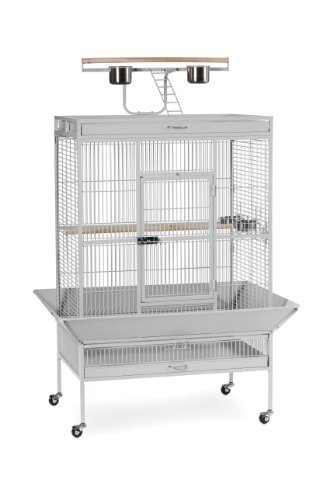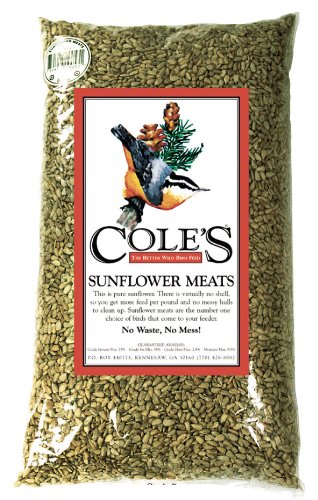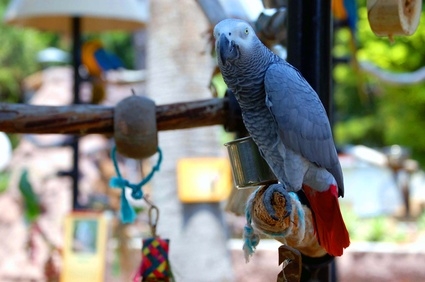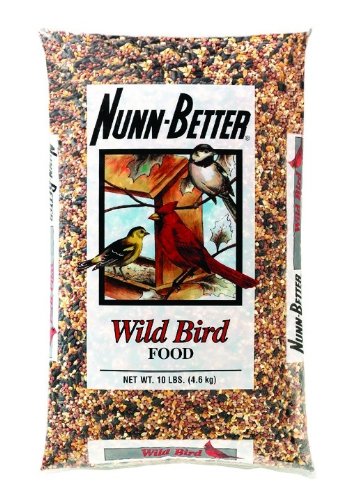
Lorikeets and/or lories are arboreal parrots. Their unique characteristic is the specialised brush-tipped tongues adapted for feeding on nectar and soft fruits. The family name is Psittacidae. They are sometimes classed as a subfamily Loriinae or in their own family Loriidae. The latest molecular studies have shown that they are closely related to Cyclopsitta and Psittaculirostris (fig parrots) and the budgerigar.
Whether or not a bird is referred to as a 'lori' or 'lorikeet' is entirely subjective. In general, species with longer tapering tails are 'lorikeets' and those with short blunt tails are 'lories'.
There are over fifty species of lorikeet. The Rainbow and Scaly-breasted are the most commonly kept species in Australia. Some exotic (foreign) species are also kept as pets. In the United States, the rainbow lorikeet, red lory, blue-streaked lory, chattering lory and black-capped lory are most commonly kept and most readily available.

They are small to medium in size and widely spread throughout the tropical South Pacific including across Australia, New Guinea, Polynesia, Indonesia, south-east Asia, parts of Peru and the Philippines. Most are very brightly coloured. The tapered wings and pointed tails give the birds great agility in the air. The feet and legs are strong.
They are not as popular as some parrots but are fairly common nevertheless. Some species eg the rainbow lorikeet are readily available while others are more scarce.
Lorikeets were once regarded as difficult to keep because of their dietary needs and the time and effort involved in cleaning up after them because of their liquid excreta.

Lories range from 150mm to 400mm in size. Most species are monomorphic meaning the sexes are hard to tell apart.
Lorikeets have a hyperactive and comical personality, both in the wild and in captivity. They are the clowns of the parrot world. They love toys they can wrestle with, climb on or swing from. They mostly move by hopping and jumping rather than be walking. Lories are inquisitive and it is rare to meet a shy one. Most love bathing. It is a gregarious, sociable bird and if there are no other birds it will befriend people or pets. If kept as a single bird they are very demanding seeking constant attention and stimulation.
They do not normally bond solidly to one person as some parrots do. They can become nippy but this can be minimised with training and socialisation. As pets they are entertaining and playful. They are also messy, excreting lots of watery faeces.

Most breed well in captivity with two chicks per clutch being the normal output. They have a reputation as being a bit difficult to feed.
Some of the larger species (chattering, black-capped) are classed as medium to high noise-makers. Goldie's lorikeet is one of the quieter of the pet parrot range. The voice is high-pitched and screechy.
The chattering and black-capped lories are generally regarded as making the best talkers but most learn to talk at least a little.
The lory is sometimes considered difficult to feed but the problem is that they can only take very small amounts of dry food or seed. They will happily eat (and do best on) a wide variety of soft, wet foods.
It is a very active bird and needs the largest aviary you can afford. A cage 60cm x 60cm x 92cm is a minimum for the smaller species and 60cm x 92cm x 122cm for larger birds. They tend to 'squirt' their droppings through the sides of the cage which can involve a lot of cleaning up. Using a seed skirt on the cage will help but you may want to cover nearby walls and floor with plastic sheeting.
The ideal is an aluminium aviary. These can be hosed down. A concrete floor with a slight slope to a drainage hole will make pressure washing or hosing an easy task. A suspended aviary with a wire base is an alternative as this will allow droppings to pass through to the ground. Lorikeets must have protection from the elements if they are to thrive.
Lories have a range of some 5,000 plant species from which they feed. The tip of the tongue has tufts of extremely fine hairs or papillae. Nectar and pollen are collected on these papillae. They also eat flowers, some seeds and other vegetable material. It is likely that they eat grubs as well. There are now commercial 'wet' and 'dry' preparations for lorikeets which make meeting their nutritional needs much easier. Fresh fruit and vegetables are important and they love native eucalypt flowers. Keep hygiene standards high. Remove uneaten food and scour feeding equipment regularly.
If their dietary needs are taken into consideration, the lorikeet will easily live for 10 to 15 years. Some live much longer.
 Military Macaws
Common Name:
Military Macaws
Common Name:
 How to Attract European Goldfinches in the Garden
Goldfinches are a real delig
How to Attract European Goldfinches in the Garden
Goldfinches are a real delig
 Old School New Body Pdf
It is wise need you. You will a dedicated mind. You need ma
Old School New Body Pdf
It is wise need you. You will a dedicated mind. You need ma
 How to Color Bird Toys
How to Color Bird Toys
How to Color Bi
How to Color Bird Toys
How to Color Bird Toys
How to Color Bi
 Mourning Doves Are Hunted Now?
Credit: audreyjm529 on flickr / Licensed unde
Mourning Doves Are Hunted Now?
Credit: audreyjm529 on flickr / Licensed unde
Copyright © 2005-2016 Pet Information All Rights Reserved
Contact us: www162date@outlook.com